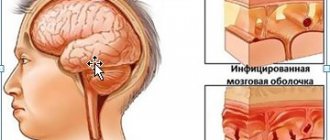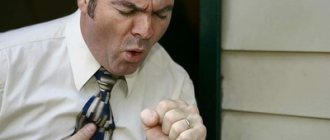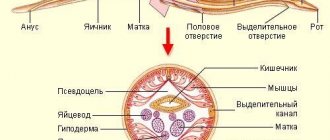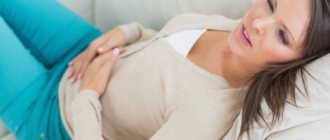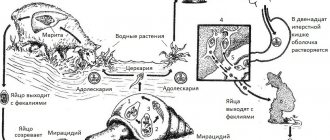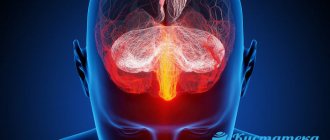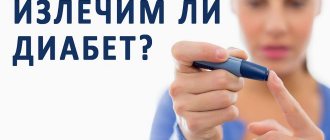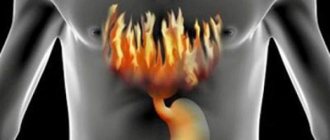Worm infestations are a fairly common phenomenon. According to WHO, they occur in 70% of the world's population. Most often, infection with worms is observed in countries with low economic levels, where people do not have the conditions for a normal life and the skills to maintain hygiene. In developed countries, the percentage of such diseases is much lower, but it cannot be discounted. At risk are small children, as well as adults who do not care about cleanliness.
Among helminthic infestations, ascariasis occupies one of the first places. In a child, it can provoke life-threatening complications, delay development, and significantly weaken the immune system. The disease is caused by roundworms. These are large worms, dangerous simply because their size causes disturbances in the intestines. In addition, like any other living organism, roundworms secrete waste products that are toxic to humans.
This article provides information about what constitutes ascariasis in children. A photo of these worms gives a comprehensive picture of their appearance. Not all parents know how you can become infected with ascariasis, what the symptoms of the disease are, and how you can get rid of parasites using medication and folk methods. The answers to all these questions are in our article.
“Portrait” and some features of the worm
Roundworms belong to a group of roundworms (nematodes), of which there are up to a million species. Most of them are very selective towards their owners and at the same time victims. For example, roundworms from a sheep will not be able to parasitize a wolf that has eaten it. Even if he swallows thousands of live eggs and larvae, they will not develop in his body.
Only roundworms of the species Ascaris lumbricoides parasitize humans. These creatures are bisexual. Females are approximately twice as large as males, which is explained by their purpose - producing eggs. One individual is capable of laying about 200 thousand of them per day. The role of the male is to fertilize the eggs so that they can develop into adults.
If for some reason only female roundworms enter the child’s intestines, they also productively lay eggs, but unfertilized ones, that is, they do not pose a danger. Females die of old age after about a year and a half; ascariasis in a child cures itself. The same can be expected if only male roundworms accidentally enter the intestines. They will live there for as long as fate allotted them, all this time excreting waste products and thereby causing painful symptoms in a person, but the disease will not develop further. However, such cases are rare. As a rule, individuals of both sexes enter the intestines.
The body of an adult female can grow up to 40 cm in length, and in rare cases up to 45 cm. The thickness of the worm is 3-6 mm. Males are 25 cm long, but most individuals grow up to 15 cm. In addition to their size, their distinctive feature is the rounding at one of the ends. The body of parasites is covered with a membrane (cuticle) that protects them from the action of chemicals, such as gastric juice. The color of roundworms ranges from grayish translucent to pale pink. These worms do not have suckers, so they do not attach to the walls of organs and do not leave wounds on them.
Adults live mainly in the small intestine, so it is impossible to cure ascariasis in a child with an enema. The worms are kept in the right place with the help of continuous movements of their body. They are able to move in cavities by changing the speed and nature of muscle work. People are shocked by the appearance of a worm, for example, from the nasal opening. Live roundworms are passed out with feces in isolated cases. As a rule, they remain in the host's body until death.
Reviews
Attention! The information presented in the article is for informational purposes only. The materials in the article do not encourage self-treatment. Only a qualified doctor can make a diagnosis and give treatment recommendations based on the individual characteristics of a particular patient.
According to statistics, 100 million people fall ill with such a helminthic disease as ascariasis every year. And these are just the recorded cases. Let's talk about the treatment of this disease and what pills there are for roundworms.
The causative agent of ascariasis is the round worm Ascaris. This helminth most often parasitizes in the small intestine, where it multiplies. Over the entire period of life, a female roundworm can reach a length of 40–45 cm, and a male – 25 cm. The source of infection is a person with ascariasis, the transmission mechanism is fecal-oral and household contact.
Life cycle
Roundworms go through a certain cycle in their development. It is carried out in the host's body (with the exception of the short stay of the eggs in the environment). At each stage, different symptoms of ascariasis are observed in children and adults. Worms begin their lives in eggs laid by a fertilized female. With feces, they go outside, where, under favorable climatic conditions (warm and humid), microscopic larvae that can breathe oxygen begin to develop in them. If such eggs enter the human gastrointestinal tract, their shell dissolves in an alkaline environment, and the larvae are free. They drill through the intestinal mucosa to get into the bloodstream. With the bloodstream, the larvae alternately enter the liver, heart, and lungs. From here, with bronchial secretions, they primarily penetrate into the bronchi, trachea, and pharynx at night, through it into the victim’s mouth, where they are swallowed with saliva into the stomach, and from there they move into the intestines. There the worms grow to a sexually mature form and begin laying eggs. The cycle ends.
Routes of infection
Out of 100 patients with ascariasis, approximately 80 people are children. This picture is determined by the ways in which the worm penetrates the body of its victim. You can only get infected from a person with ascariasis. The eggs of worms, coming out along with feces, end up on the soil and sand. Children, especially preschoolers, often put their fingers in their mouths when playing outside. If they contain roundworm eggs with larvae beginning to develop, the child will develop ascariasis in 100% of cases. Infection is also possible when eating unwashed vegetables, fruits, and herbs.
Another way is water, which can also contain worm eggs. Infection occurs if you drink it without first disinfecting it by at least boiling.
Some insects, particularly flies, also play a role in the spread of ascariasis among the population. On their paws they can transfer parasite eggs from soil and feces to food.
Thus, the route of infection with ascariasis is only fecal-oral.
It is impossible to catch this disease from cats or dogs. You cannot get sick from it by eating insufficiently heat-treated meat of animals and birds.
There are also no known cases of transmission of infection through kissing, sneezing and coughing.
Self-healing for ascariasis
Self-healing of ascariasis is quite possible. The fact is that the life cycle of acarids is less than 12 months, rarely 15. After death, the parasite leaves the body with the contents of the intestines, and the person recovers. Sometimes a person may not even realize that he has ascariasis - in most cases the disease goes away without symptoms.
After self-healing for 6 months, the body retains immunity from infection. Special antibodies are formed in the body . They prevent the migration of larvae and prevent them from molting. But this protection is not reliable and if larvae enter the body, it is quite possible to get sick again.
Symptoms
The clinical picture of ascariasis in children depends on the stage of the disease and the individual capabilities of the body. In adult patients, at the stage when the eggs have just entered the intestines and began to be released from the shell, as a rule, no signs of infection are observed. In children, the body is more delicate and weak, therefore it reacts to the penetration of foreign agents much more actively. Already at the very first stage, which lasts one to three days, parents may notice a loss of appetite and interest in toys in the child; some children complain of abdominal pain and nausea. But in most children this stage is asymptomatic.
Having penetrated the portal vein, the larvae of worms enter the liver through the bloodstream, where they very actively seep into the hepatic lobules, as well as into the hepatic and then vena cava. This stage can also occur without symptoms, although tissue injury occurs in the liver along the path of parasite migration, and inflammatory infiltrates appear containing an increased number of eosinophils. At the hepatic stage of ascariasis in children, symptoms may include pain in the right side, poor appetite, slight yellowing of the skin, and enlarged liver.
From this organ, roundworm larvae enter the right atrium, and from there into the capillaries of the lungs. Through their thin walls, parasites penetrate into the lumen of the alveoli and enter the trachea. Infiltrates may also appear in the lungs. The child has a cough, shortness of breath, and fever. Many parents mistake this condition for ARVI. This entire stage takes about 10 days. From the lungs, the larvae move to the mouth, and from there again to the intestines, where they continue to develop. Symptoms of ascariasis at this stage are as follows:
- Abdominal pain.
- Abnormal stool.
- Rumbling in the stomach.
- Weight loss.
- Flatulence.
- Enlarged lymph nodes.
- Moodiness, refusal to eat, weight loss.
- Grinding of teeth in sleep.
- Paleness of the skin.
When the worms become sexually mature, ascariasis becomes chronic. Symptoms of this condition are:
- Nausea, especially before breakfast.
- Headache.
- Sleep disturbance.
- Fatigue.
- Stomach ache.
- Stool disorder.
- Weight loss.
- Mental disorders.
- Allergic reactions in the form of a rash.
- Sometimes children experience convulsions and epileptic seizures.
- Frequent infectious diseases due to decreased immunity.
If the long course of ascariasis has led to complications, symptoms of diseases caused by helminthic infestation are observed.
Research methods
Diagnosis of ascariasis in children is carried out comprehensively. They take for analysis:
- Blood. It determines the level of leukocytes, which is always elevated at the migratory stage of the disease.
- Sputum. At the pulmonary stage (determined by symptoms), worm larvae can be easily detected in the discharge.
- I'm peeing. This test is not specific. It is impossible to detect worm larvae in urine. Using biochemical methods, the level of volatile fatty acids is checked. These substances are released during the maturation of roundworms. You can suspect their presence in a child’s body at a very early stage, when individuals have not yet begun producing eggs. However, fatty acids are also released during some other processes, so their presence in the urine cannot indicate ascariasis.
- Cal. Worm eggs can be found in it only at the stage when roundworms have become sexually mature. In this case, using a microscope in the feces, small elliptical grains of light yellow color ranging in size from 30 to 60 microns can be clearly distinguished. Ascariasis in children is not always detected by stool analysis. It may not be informative during the first three months after infection. This is exactly how much the roundworm needs to transform from a larva into an adult. Also, the analysis is not informative if there are worms of the same sex in the intestines. Males do not lay eggs, and the unfertilized eggs of females are so large that they are almost impossible to detect by microscopic examination.
Patients are also prescribed:
- Tests for the presence of antibodies to roundworms.
- Ultrasound. It is impossible to detect worms using this method, but it helps to identify other ailments that are complications of ascariasis.
- X-ray. Performed if the child has a cough that cannot be treated with classical methods.
How to detect roundworms in a child?
To recognize the early stage of ascariasis, it is necessary to rely on clinical and epidemiological data. Detection of helminths can be accidental, for example, during a survey radiography of the chest, intestines, during surgical operations, endoscopy.
To diagnose ascariasis in a child, you must:
- study the history of the disease (find out what symptoms have been bothering the baby and for how long);
- conduct a general blood test (it will show leukocytosis and eosinophilia, hemoglobin may be reduced);
- conducting a microscopic smear of sputum, larvae can be found in it, but this phenomenon is rare, most often eosinophils and Charcot-Leiden crystals are found;
- examine stool for helminth eggs;
- conducting a plain radiography of the chest organs. The image may reveal eosinophilic infiltrates in the lungs;
- conducting a survey X-ray of the intestine with contrast. This method is rarely used. With its help, you can detect the presence of adult helminths, their location and size;
- conducting serological diagnostics, which can increase antibodies against helminthic infestation (this method is not widely used in medicine);
- carrying out serological analysis for ascariasis in children, precipitation reactions on a living larva. When carrying out these research methods, an increase in antibodies against helminthic infestation is detected (not widely used in medicine).
How to treat ascariasis in children
Therapy is carried out at home. Only those patients whose disease has caused complications requiring emergency care and constant medical supervision are sent to the hospital.
The child must be prescribed an antiparasitic drug. There are many such medicines. Only a doctor can figure out which will be more effective in a particular situation. Among them there are some drugs that children should not take. These are "Dekaris", "Levamisole".
The drug "Vermox" for children with ascariasis is allowed to be used only from 2 years of age. It is also contraindicated in liver failure and ulcerative colitis. Vermox destroys only adult worms and larvae. Its effect does not apply to eggs. The drug is available in tablets of 6 pieces in a blister. Children aged 2-5 years should take no more than ¼ tablet at a time. Children 5-10 years old - ½ tablet, and from 11 years old - a whole tablet. After 2 weeks, it is necessary to repeat the procedure to destroy those worms that managed to emerge from the eggs during this time.
Some enterprises produce Vermox in the form of a 2% suspension (30 ml bottles). For treating children, this form is more preferable. Dosage – 20 ml once.
Many doctors prescribe Nemozol for children with ascariasis. This drug is available in three forms:
- Coated tablets. They need to be washed down with water.
- Chewable tablets. They have a pleasant taste, so they can be consumed like caramel.
- Suspension.
Children over 2 years of age are prescribed one tablet in any form or 20 ml of suspension once.
Children under 2 years of age are prescribed only a suspension, which is given at the rate of 15 mg per 1 kg of baby’s weight.
"Pirantel" is another drug recommended by the famous pediatrician Komarovsky. This medication treats ascariasis in children very effectively. Unlike other similar medications, Pirantel can be taken by pregnant women and infants from 6 months of age. It is available in the form of a suspension for children and tablets for adults. The dosage is calculated taking into account the age of the baby:
- 6 months-2 years: one-time 2.5 mg or half a cap included in the bottle;
- 2-6 years: 1 cap is given, which corresponds to 5 ml;
- 6-12 years old, you need to take 2 caps (10 mg) at a time;
- From 12 years old, 3 caps at a time.
Any remedy for worms can cause a number of adverse reactions - nausea, headache, diarrhea, abdominal pain, dizziness, vomiting. Therefore, you need to take them in consultation with a pediatrician or infectious disease doctor.
In parallel with antiparasitic drugs, the doctor may prescribe:
- Antihistamines (Zodak, Suprastin).
- Enzymes to improve the functioning of the gastrointestinal tract (Festal, Creon, Mezim).
- Probiotics for restoring microflora (Linex, Bifiform).
- Vitamins.
Treatment at home
Pumpkin seeds are used in the treatment of ascariasis in adults at home
Some people do not like pills and are interested in how to get rid of roundworms at home. Traditional medicine offers its own methods of treating ascariasis in adults.
- Grate the head of garlic and boil in milk for 30 minutes. Cool. Use the decoction as an enema.
- Boil pumpkin seeds for half an hour. Drink the decoction three times a day before meals for three days.
- Infusion of chamomile, wormwood, tansy. Drink half an hour before meals.
- Take pumpkin seeds and wormwood in equal quantities. Pour alcohol in a ratio of 1:3. Leave in cool place for a week. Drink half a glass half an hour before meals, no more than twice a day.
Many people are interested in how roundworms come out after treatment. Dead roundworms in humans leave the intestines with feces. They are not always noticeable. Therefore, you should not judge for yourself whether the chosen remedies for the treatment of ascariasis helped. Taking some medications sometimes requires an enema to remove parasites from the body. This is indicated in the instructions.
You should not decide on your own how to treat roundworms. Before supplementing drug therapy with folk remedies, hoping to quickly remove ascaris from the intestines, you need to consult your doctor. Otherwise, side effects and complications are possible.
Folk remedies
Many parents are looking for an answer to the question of how to treat ascariasis in children using traditional medicine methods, so as not to give their children pills that cause so many adverse reactions. Healers have accumulated a wealth of experience in ridding people of helminths. They use only natural ingredients in their recipes. Among them:
- Garlic.
- Horseradish.
- Pomegranate peel.
- Onion.
- Sagebrush.
- Tansy.
- Raw pumpkin seeds.
The effect of decoctions and infusions of these plants is based on their taste and bitterness, supposedly capable of forcing worms to leave their victims. In fact, all folk remedies are one of the methods of prevention (together with hygiene). They also bring benefits in combination with the main therapy, as they contain many useful substances that have a beneficial effect on the body:
- Onions, horseradish, and garlic are real storehouses of vitamins. Consuming these products in reasonable quantities is very beneficial.
- Pomegranate peel has astringent, antimicrobial, and wound-healing properties. Children are often given decoctions from it for diarrhea.
- Wormwood improves digestion and has antiseptic and anti-inflammatory properties.
- Tansy can be used as a choleretic, antimicrobial, antispasmodic, and antipyretic agent.
Reviews about the treatment of ascariasis in children with traditional methods are contradictory. There are parents who claim that eating garlic with milk, pumpkin seeds or tansy decoction helped get rid of worms. But the majority of respondents claim that the expected effect did not occur after such therapy. There are reports that treatment with a decoction of wormwood and tansy caused approximately the same negative reactions in children as the pills - nausea, vomiting, abdominal pain. Reviews about official medications are also different. All parents say that the downside of medications is their side effects. The advantage is their high efficiency.
Many doctors, including Komarovsky, warn that treating helminthic infestations using only folk remedies is unacceptable.
Roundworms in children: symptoms and treatment with drugs and folk remedies
When roundworm is detected in children, the symptoms and treatment of parasites must be determined after testing.
Roundworms are a type of worm that can live in the intestines of adults and children. If these parasites are not controlled, the female’s body length can reach 40 cm.
Roundworms move freely inside the human body without attaching to the intestinal wall.
During examination of a patient, it is not always possible to detect ascaris eggs in the stool. Nowadays, more effective research methods are used to recognize ascariasis.
There are several known species of roundworm, of which only two species can infect humans. They have a round, spindle-shaped body, pointed towards the end of the tail. Moreover, males are much smaller than females.
The female, being in the small intestine, can lay more than 200 thousand eggs per day. These may include fertilized and unfertilized eggs.
Ascaris larvae emerge after 20-30 days from a mature egg. A child who eats a prepared larva becomes infected. Parasites are able to live and reproduce in the human body for a long time.
Roundworms live and reproduce according to a specific cycle. It begins from the moment when the egg of this parasite enters the human body.
The eggs hatch into larvae that begin their migration inside the body. As a result, they reach the throat, as a result the sick child swallows them, and they again end up in the intestines. Here they develop up to 2-3 weeks and become adult parasites ready to lay eggs.
Ascaris eggs are passed out of the intestines along with feces during bowel movements. At first they pose no threat to the other person. In order for such eggs to infect humans, they must first mature in the soil. The development process takes place within two weeks in the ground at a temperature of 28-30 C. At a soil temperature of 15-18 C, eggs can mature in only 2 months.
The eggs of these parasites are very tenacious and can survive unfavorable conditions for several years.
Adults can live inside humans for up to 24 months. After this, their life cycle ends. However, it often happens that some people become infected with roundworm eggs all the time. New eggs entering the intestines renew the population of these worms.
Children infected with roundworms may experience some complications. Although the larvae are microscopic in size, they can harm blood vessels and organs. As a result, bleeding, inflammation and other diseases of varying severity occur.
Ascaris waste can cause allergies and extreme intoxication, as a result of which they provoke suffocation and various skin diseases in the child. The presence of parasites in a child’s body can also cause dysbiosis and deterioration of the immune system.
The child's weakened body becomes too susceptible to various infections.
If a child infected with roundworms is under 2 years of age, doctors do not vaccinate him, since vaccination in this case will not give a positive result.
As practice shows, a person can become infected with ascariasis only from a person. Also, infection can occur through soil and water. In the ground, parasite eggs mature at favorable temperatures and humidity, after which they become capable of invasion.
Ascaris eggs, being in the ground, can live up to 30 years, waiting for the necessary conditions for the roundworm to mature. In children, symptoms and treatment are determined only by a doctor, but parents should also help the child recover from parasites.
Some bodies of water may contain mature roundworm eggs that are capable of infection . Children swimming in these ponds accidentally swallow water, and parasites enter the intestines. There, larvae begin to develop, which poison and injure the body. It is worth paying attention to the fact that tap water of poor quality may also contain roundworms.
Fertilized eggs can be carried into the house with shoes . Here they can easily get on food and dishes. Children are often infected through toys they played with in the sandbox, as well as through dirty hands. Flies that carry infections can also cause disease.
Salted and dried fish from ponds and lakes can lead to ascariasis . Do not allow children to eat berries and vegetables directly from the garden, as they may contain eggs of roundworms and other parasites. Before use, products should be thoroughly washed in running water.
The first signs of roundworm in a child may be pale skin and bad breath in the morning. At the same time, he may lose his appetite and begin to lose weight. There is also increased excitability, often tearfulness and periodic abdominal pain.
In the presence of parasites, it can begin, since the parasites actively eat nutrients that the child’s body really needs. Immunity is significantly reduced, and children behave inappropriately.
Often ascariasis in children is asymptomatic. Those signs that a child has are initially classified as colds. In some cases, a child is mistakenly suspected of having appendicitis.
Serious signs of illness appear in a child 7-10 days after parasite eggs have entered his body. At this point, a dry cough, heavy breathing, fever, and skin rash may occur.
After 20-30 days, the child develops vomiting, abdominal pain, loose stools or constipation, and enlarged lymph nodes and liver. In addition, parasites can be found in the stool when defecating. With ascariasis, the child often experiences bloating and dysbiosis.
The definition of ascariasis in children at an early stage is based on clinical data, as well as the presence of certain signs. Serological methods for diagnosing the disease in children are not particularly widespread.
The most accurate results of research on ascariasis are possible only three months after infection. At this time, the parasites enter the sexually mature stage. Then you can examine the child’s stool to detect roundworm eggs.
A one-time stool test is not always successful. To establish an accurate diagnosis of the disease, it is advisable to examine the child’s feces for 10-14 days. However, treatment can begin as soon as external signs of ascariasis are detected.
Drug treatment
When ascariasis is detected in children, treatment is carried out only as prescribed by a specialist who prescribes an anthelmintic drug specifically for the patient. The doctor takes into account the patient’s body weight, allergic predisposition to the drug, and the condition of the liver.
The infected child is treated with a combination method . In parallel with antihelminthic medications, the child takes antiallergic medications such as Suprastin and Diazalin, which help the body cope with allergies. During treatment, roundworms begin to die, and they may enter the bloodstream. Therefore, it is necessary to take sorbents that are capable of removing dead bodies and parasite eggs without causing harm to the body.
Dead roundworms are also removed using laxatives and cleansing enemas. During ascariasis, the child’s absorption of vitamins and nutrients is disrupted, so the doctor prescribes vitamin complexes. In this case, B vitamins must be present.
Folk remedies for roundworms
With ascariasis, many parents try to treat their child with folk remedies. However, it is worth noting that this method of treatment may not be safe. It has been scientifically proven that with the help of folk remedies alone, it is practically impossible to get rid of parasites. Therefore, an infected child must undergo a course of therapy based on chemical drugs.
At the first signs of illness, it is recommended to immediately consult a doctor. In this case, he will prescribe “light” treatment with medications, and for reinforcement, he will offer folk recipes that are suitable for your child.
Komarovsky's advice on treating parasites
Using traditional methods can only complicate the child’s condition, and precious time will be lost. Any pediatrician tries to prescribe effective medications that contain a minimum amount of toxins and other harmful elements.
Also, Dr. Komarovsky advises paying more attention to prevention. To do this, you need to adhere to the simplest rules: wash your hands after walking, thoroughly wash vegetables, berries and fruits, bring meat and fish to full thermal readiness, do not drink raw water, especially from reservoirs, clean the house more often and wash children's toys.
All this can protect children from infection with roundworms and other parasites.
Komarovsky>
Complications
Ascariasis in children and adults can lead to serious complications. A large accumulation of such large worms in the intestines causes intestinal obstruction. There have been cases when the intestinal wall ruptured, causing peritonitis.
Migrations of roundworms to other organs almost always cause inflammation. Thus, worms in the pancreas cause acute pancreatitis, and in the biliary tract – purulent cholangitis.
In the liver, roundworms cause obstructive jaundice and organ abscess.
Roundworms in the lungs cause great harm. Here they provoke the development of pneumonia, suffocation, and asthma.
Many of these complications can be fatal.
General characteristics of helminths
To understand how to remove roundworms from children, you need to become familiar with the life cycle of the helminth and methods of infection.
The common roundworm is a roundworm that reaches an impressive size as an adult. The female can reach 40 cm in length, males - 25 cm. The roundworm that infects humans has a white-pink hue and a spindle-shaped shape.
Ascariasis is transmitted in children through the oral-fecal route. But it is not direct infection that occurs, but through an intermediate soil stage. The eggs of these parasites mature exclusively in the soil, from where they are able to get into water and onto plant products.
Ascariasis is most often diagnosed in young children. Adults become infected much less frequently. Roundworms are found in any climate zone, except deserts and permafrost zones. Ascariasis infection is most common in the tropics and subtropics, where almost 80% of people are carriers of these helminths.
Roundworms can be of different lengths
When choosing how to treat roundworms in children, it should be taken into account that symptoms and treatment will depend not only on the stage of development of helminths, but also on the location of the colonies.
Ascariasis and enterobiasis in children
Without proper hygiene, you can become infected not only with roundworms, but also with other worms. Pinworms are perhaps the most common type of nematode that parasitizes humans. In appearance, they can be called a copy of roundworms reduced by about 40 times, only their color is not pink, but white-cream. Pinworms have a sucker at one end of their body, with which they attach to the intestinal mucosa. They parasitize the small intestine, cecum and colon, as well as the appendix.
You can only catch these worms from a sick person. The route of infection is fecal-oral. Enterobiasis is called childhood helminthiasis because it especially often affects preschool children who put everything in their mouths.
The lifestyle of pinworms has one significant feature - they lay eggs only outside the intestines on human skin. To do this, females crawl out of the anus every night. In this case, the person experiences severe itching. In the perianal folds, the eggs begin to mature. After about 6 hours they are already capable of causing enterobiasis. When scratching, eggs get on your fingers and under your nails. A sick child can swallow them again (if he puts his hands in his mouth). He can also transfer eggs from his hands to toys and household items.
The main symptom of enterobiasis is itching in the anal area. Pinworms themselves can be identified in feces, but their eggs are not there. To confirm the diagnosis, a scraping is taken from the perianal folds.
Treatment of enterobiasis follows the same scheme as ascariasis. Drugs of choice: “Vermox”, “Pyrantel”, “Nemozol”. Doctors also prescribe Piperazine, Mebendazole, Zentel and their analogues. To completely get rid of worms, the course is repeated after 12-14 days.
How to avoid infection with worms
Prevention of ascariasis in children and adults consists of a single measure - maintaining hygiene. Children need to be taught the concept that they should not eat without first washing their hands. You also need to wean them from putting fingers, toys, or any objects into their mouths. Parents should make it a rule to eat only washed vegetables and fruits. They must teach their children this too.
Water from open sources must be boiled before using for drinking.
Prevention of enterobiasis also involves maintaining hygiene. In addition, if you have pinworms, you need to change your underwear and bedding daily, and only wear panties that fit tightly to your body. If a patient with enterobiasis is identified in a family, kindergarten, or class, all members of the team must undergo treatment.
Treatment tactics for ascariasis in adults
Treatment of ascariasis in adults
Treatment of ascariasis in adults is carried out both with a confirmed diagnosis, that is, for the specific purpose of removing the parasite, and preventively. Drugs that ensure the removal of roundworms have a toxic effect not only on the parasite, but also on the human body, therefore, a remedy for removing roundworms in children should have an effect that is less harmful to the child’s body. Ideally, a medicine that can cure an adult should include effects on the larvae and adults.
This therapeutic effect is present in the drug "Albendazole". For ascariasis, the following treatment regimen is used: 1 Albendazole tablet containing 400 mg of the active substance is taken in the morning after a meal by mouth and washed down with water. Repeated administration is prescribed with the same dose after 3 weeks.
Albendazole in the treatment of ascariasis in adults
For a woman who is pregnant or continues to breastfeed her baby, Albendazole should not be used in the treatment of ascariasis due to its high toxicity. The mechanism of action of Albendazole is to cause changes in the parasite's intestines. leading to the inability to absorb glucose and synthesize ATP in his muscles, as a result of which he dies. Additional use of laxatives after treatment with Albendazole is not required.
Nemozol treats ascariasis in adults
The drug has many analogues and is known under the names “Vormil”, “Nemozol”, “Formox”. Treatment of ascariasis is prescribed by an infectious disease specialist or parasitologist; in the absence of one, by a general practitioner. The experience of traditional medicine has accumulated a sufficient number of home treatment methods, but it is better to undertake them after consulting a doctor. A tincture of wormwood, a decoction of tansy, an onion infusion, an infusion of garlic and horseradish, and enemas of a decoction of garlic in milk are used. The diet for ascariasis is aimed at maintaining the gastrointestinal tract and replenishing vitamins and minerals, as well as introducing foods that have an anthelmintic effect:
- chanterelles;
- fresh onions and garlic;
- cherry;
- pomegranate juice;
- strawberries;
- walnuts;
- apricot kernels;
- pumpkin seeds.
Advice! In addition to vegetables and fruits, it is useful to include cereals containing fiber to prevent constipation.

